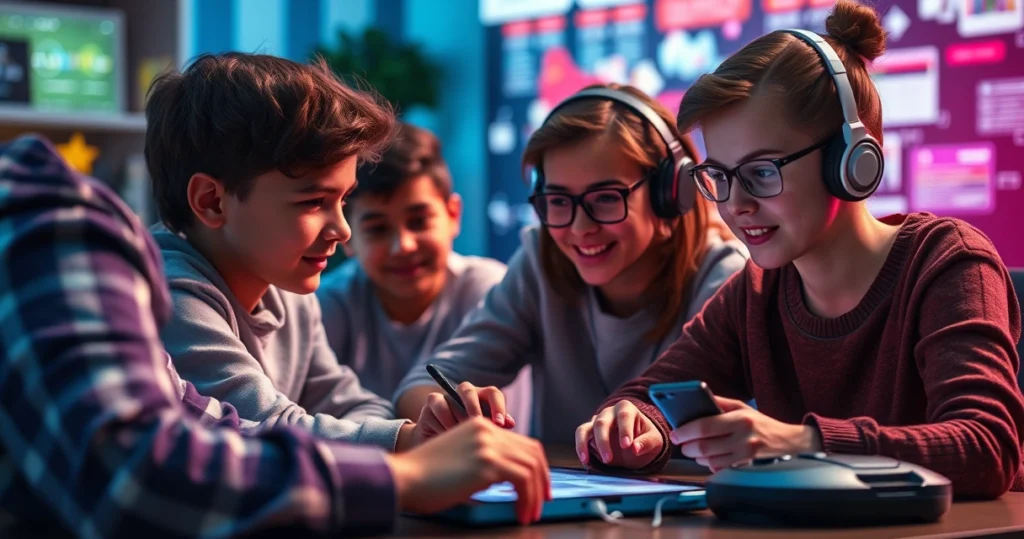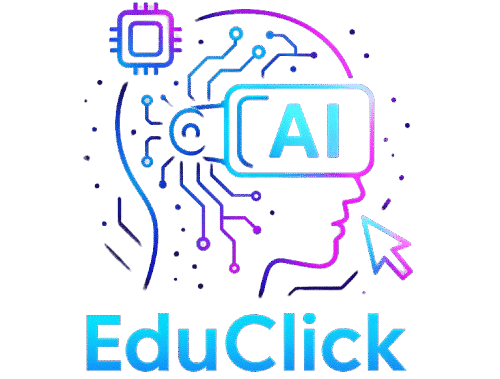From Microlearning to Nano-learning: Education Gets Smarter
Imagine a world where learning is as seamless as scrolling through your favorite social media feed, where education adapts to your pace, interests, and needs. In this world, knowledge is not just a goal but an integrated part of your daily life, accessible anytime, anywhere. You’ve probably experienced the frustration of traditional classroom settings where the pace can feel either too slow or too fast, leaving you either twiddling your thumbs or struggling to keep up. However, the educational landscape is rapidly transforming, bringing forth a revolution that caters to individual learning tempos and preferences. This is where the concepts of microlearning and nano-learning step in, offering a smarter way to engage with education.

Perhaps you remember a time when you eagerly signed up for an online course, excited to dive into a new subject, only to find yourself overwhelmed by lengthy videos and hefty textbooks. The promise of mastering a skill quickly faded into the reality of trying to fit comprehensive study sessions into your already packed schedule. But what if you could learn at your own speed, in bite-sized chunks, making every moment of your day a learning opportunity? By adopting microlearning and transitioning into nano-learning, education becomes an empowering tool rather than a daunting task.
Microlearning has been a game-changer, breaking down information into manageable pieces, making it easier for you to absorb and retain knowledge. Yet, even more granular is nano-learning, which refines this concept further. Imagine learning a new language by engaging with brief yet impactful lessons on your morning commute or mastering a new skill during a lunch break. Nano-learning fits perfectly into those small pockets of time that would otherwise go unused, transforming them into opportunities for growth.
As we delve into this article, you’ll uncover how these innovative teaching methods are reshaping education to be more dynamic, personalized, and accessible. Whether you’re a student, a professional seeking new skills, or an educator looking to enhance teaching practices, understanding the evolution from microlearning to nano-learning can open doors to smarter educational experiences. Let’s explore how this transformation benefits you and the future of learning.
The Shift from Traditional Learning to Microlearning
The Dilemma of Traditional Learning Methods
Traditional learning methods, often characterized by lengthy lectures and extensive reading materials, have been the backbone of education for centuries. However, these methods frequently fail to engage students effectively. Many learners find it difficult to concentrate during long lectures or retain information from voluminous texts.
– Lack of engagement can lead to diminished learning outcomes.
– Students often experience information overload.
– Traditional methods may not cater to various learning styles.
Introduction to Microlearning
Microlearning addresses these challenges by breaking down complex topics into smaller, more digestible units. This approach is not only more engaging but also aligns with the contemporary lifestyle and attention spans.
– Utilizes digital platforms to deliver content in short bursts.
– Focuses on key concepts for improved retention.
– Enhances learner engagement through interactive elements.
Practical Applications and Success Stories
Organizations and educational institutions have embraced microlearning to improve training and educational outcomes. For example, a multinational corporation implemented microlearning modules for employee training, resulting in a 30% increase in course completion rates.
– Companies use microlearning for onboarding and skill development.
– Educational apps like Duolingo employ microlearning to teach languages.
– Educational institutions report higher engagement and better performance.
The Emergence of Nano-learning
Understanding Nano-learning
While microlearning focuses on concise content delivery, nano-learning takes it a step further by offering ultra-brief lessons that can be consumed in seconds.
– Nano-learning is designed for rapid consumption.
– It provides just-in-time learning opportunities.
– Ideal for busy professionals and learners with limited time.
How Nano-learning Enhances Personalization
Nano-learning offers a higher degree of personalization by allowing learners to choose specific topics of interest and learn at their own pace.
– Tailors content to individual learning preferences.
– Supports more precise learning objectives.
– Enables continuous, lifelong learning.
Examples and Case Studies
Several platforms have successfully integrated nano-learning into their offerings. For instance, a mobile app delivering nano-lessons on mindfulness has helped users incorporate meditation into their daily routines.
– Apps provide quick tips and tricks for various skills.
– Microcredential programs use nano-learning for targeted skill acquisition.
– Corporate training includes nano-learning for immediate job-related skills.
🎥 Vídeo complementar sobre o tópico
Benefits of Smart Education: Microlearning and Nano-learning
Increased Engagement and Retention
Microlearning and nano-learning techniques are highly effective in boosting learner engagement and retention.
– Interactive and multimedia content keeps learners engaged.
– Short, focused lessons aid in memory retention.
– Frequent repetition of key concepts reinforces learning.
Flexibility and Accessibility
One of the most significant advantages of smart education is its flexibility and accessibility, allowing learning to fit into your busy lifestyle.
– Accessible on various devices anytime, anywhere.
– Learning sessions can be interspersed throughout the day.
– Suitable for a diverse range of learning environments.
Cost-effectiveness and Resource Efficiency
Implementing microlearning and nano-learning can lead to significant cost savings for both learners and educational institutions.
– Reduces the need for physical materials.
– Minimizes time off work for professional development.
– Efficient use of digital resources reduces costs.
Challenges and Considerations in Implementing Smart Education
Overcoming Technological Barriers
Despite its advantages, smart education faces challenges, particularly in terms of technology.
– Ensuring access to reliable internet and devices.
– Overcoming user resistance to new technologies.
– Addressing cybersecurity and data privacy concerns.
Balancing Depth with Brevity
While microlearning and nano-learning excel at delivering concise content, there’s a risk of oversimplifying complex subjects.
– Finding the right balance between brevity and depth.
– Ensuring comprehensive understanding through supplementary materials.
– Providing opportunities for deeper exploration.
Measuring Learning Outcomes
Another challenge lies in effectively measuring the success of these learning methods.
– Developing reliable assessment tools.
– Tracking learner progress and engagement.
– Continuously refining content based on feedback and results.
The Future of Education: Towards a Smarter Approach
Integration of AI and Machine Learning
The integration of artificial intelligence (AI) and machine learning into educational platforms is paving the way for even smarter learning experiences.
– AI tailors content to individual learning paths.
– Machine learning algorithms analyze performance data to optimize content.
– AI-driven platforms provide real-time feedback and support.
Blended Learning Environments
Future education will likely blend traditional and innovative teaching methods, offering a more holistic learning experience.
– Combines face-to-face interactions with digital learning.
– Encourages collaborative and independent learning.
– Provides a well-rounded educational experience.
Global Implications and Opportunities
The shift towards smarter education methods opens doors for global collaboration and access to education.
– Offers opportunities for cross-cultural learning.
– Provides access to quality education for remote and underserved communities.
– Promotes a global exchange of knowledge and ideas.

Frequently Asked Questions
What is the difference between microlearning and nano-learning?
Microlearning involves breaking down complex topics into smaller, digestible units, usually delivered in 5-10 minute chunks, while nano-learning offers even more concise lessons, often lasting under a minute. Both methods aim to enhance engagement and retention but differ in the depth and duration of content delivery.
How can microlearning be implemented in corporate training?
Microlearning can be integrated into corporate training by developing short, focused modules on specific skills or topics. Companies can use digital platforms to deliver these modules, allowing employees to learn at their own pace, which can lead to more effective skill acquisition and employee development.
What are the benefits of nano-learning for students?
Nano-learning benefits students by offering highly personalized learning experiences that fit into their busy schedules. By delivering content in ultra-short bursts, students can engage with material between other commitments, enhancing retention and comprehension without overwhelming them.
Can microlearning and nano-learning replace traditional education?
While microlearning and nano-learning offer innovative approaches to education, they are best used in conjunction with traditional methods. These approaches can enhance traditional learning by providing additional resources and flexibility but may not fully replace comprehensive education systems.
Are there specific subjects more suited to nano-learning?
Nano-learning is particularly effective for subjects that can be broken down into discrete, easily digestible facts or skills. Language learning, technology updates, or quick tips for personal development are well-suited due to their concise nature and the ability to practice them in short intervals.
How do you ensure the quality of content in micro and nano-learning?
Ensuring quality involves careful planning and design, with a focus on creating engaging, accurate, and relevant content. Involving subject matter experts and employing feedback loops to refine content based on user experience and outcomes are also crucial in maintaining high standards.
What technologies support microlearning and nano-learning?
Technologies such as Learning Management Systems (LMS), mobile applications, and cloud-based platforms support microlearning and nano-learning by facilitating content delivery, progress tracking, and interactive elements. These technologies allow learners to access content on-the-go and at their convenience.
How does nano-learning address different learning styles?
Nano-learning caters to different learning styles by offering diverse content formats such as videos, audio snippets, quizzes, and infographics. By providing multiple avenues for engagement, learners can choose the format that best suits their preferences, enhancing their understanding and retention.
What role does feedback play in microlearning and nano-learning?
Feedback in microlearning and nano-learning is crucial for reinforcing concepts and guiding learners. Immediate, targeted feedback helps learners correct mistakes, understand concepts more deeply, and stay motivated. It also allows educators to adjust content to meet learner needs effectively.
Conclusion: Embracing the Future of Learning
As the world of education evolves, the shift from microlearning to nano-learning represents a significant leap towards smarter, more efficient learning methods. These innovative teaching strategies not only empower you to learn at your own pace but also ensure that education becomes a lifelong journey rather than a finite destination. By embracing these methods, you place yourself at the forefront of educational innovation, equipped to adapt and thrive in a rapidly changing world.
Imagine a future where learning is seamlessly interwoven into your daily routines, where acquiring new skills or knowledge is as simple as checking your phone. This is the promise of microlearning and nano-learning—making education accessible, engaging, and tailored to your individual needs.
We encourage you to explore these methods and incorporate them into your educational endeavors, whether you are a learner, educator, or employer. By doing so, you contribute to a world where education is smarter, more inclusive, and better suited to the demands of modern life. So, take the leap, embrace the change, and unlock the endless possibilities that await in the realm of smart education.
Key Takeaways
- Microlearning and nano-learning offer innovative, efficient ways to engage with educational content, allowing learners to study at their own pace.
- The benefits include increased engagement, flexibility, and cost-effectiveness, making learning more accessible and personalized.
- Despite challenges like technological barriers and content quality, these methods show promise for the future of global education.
- The integration of AI and machine learning can further enhance personalized learning experiences, paving the way for smarter education systems.




